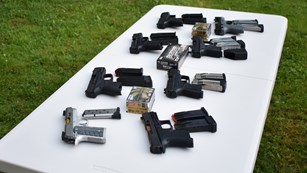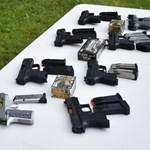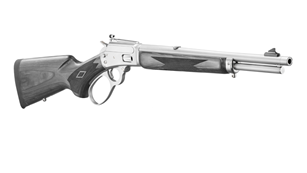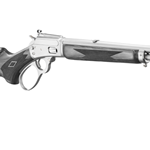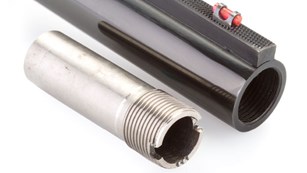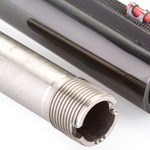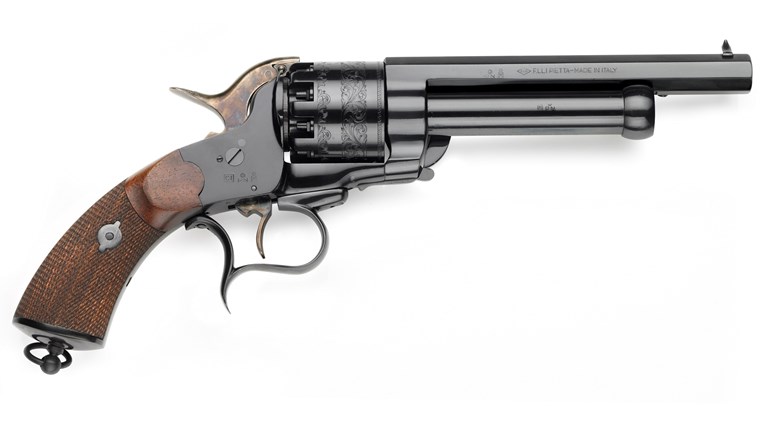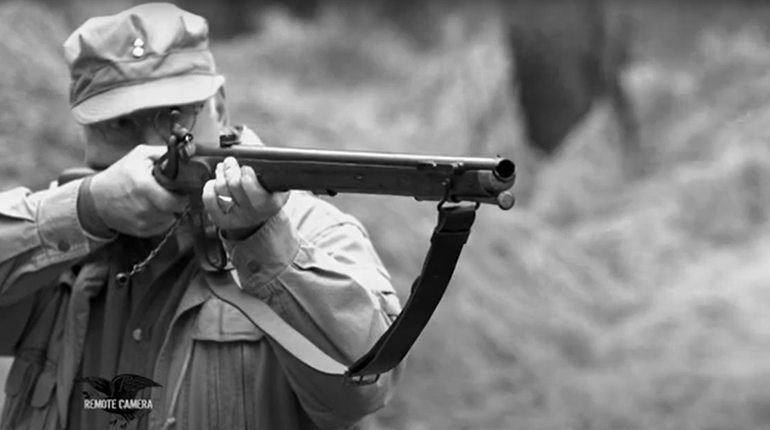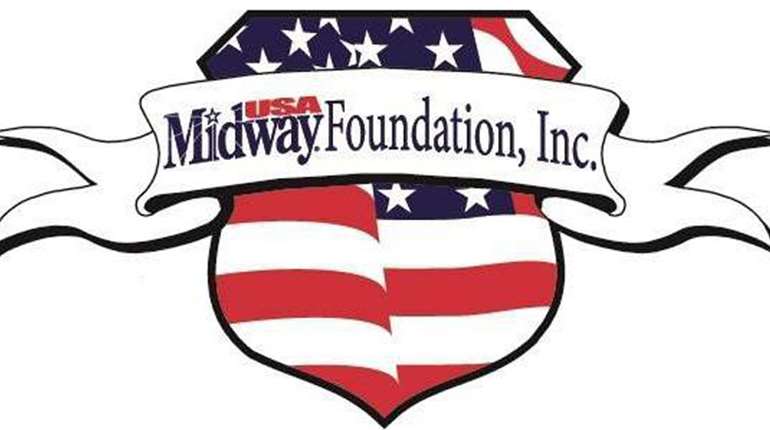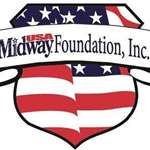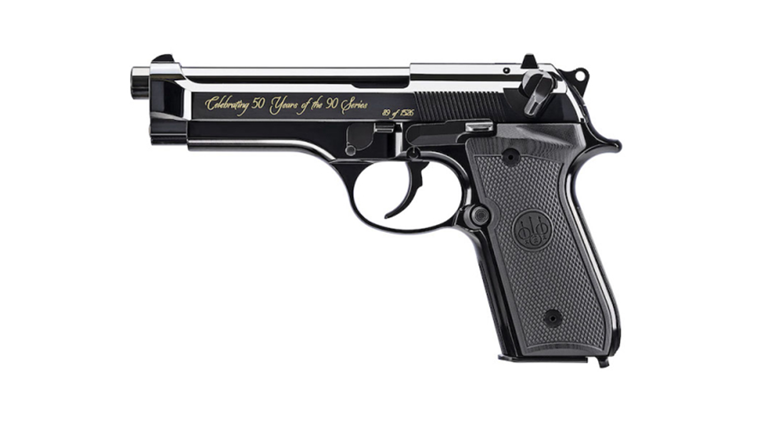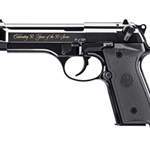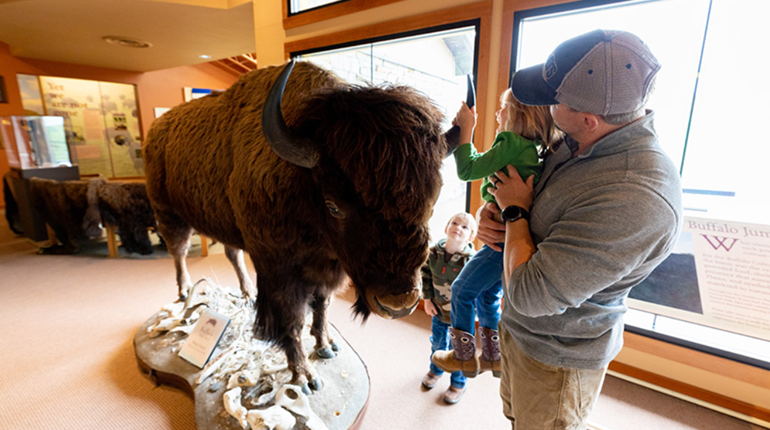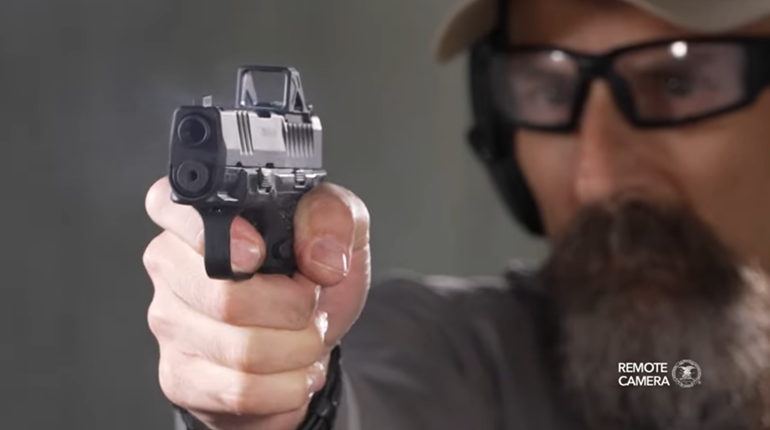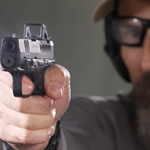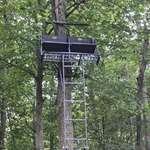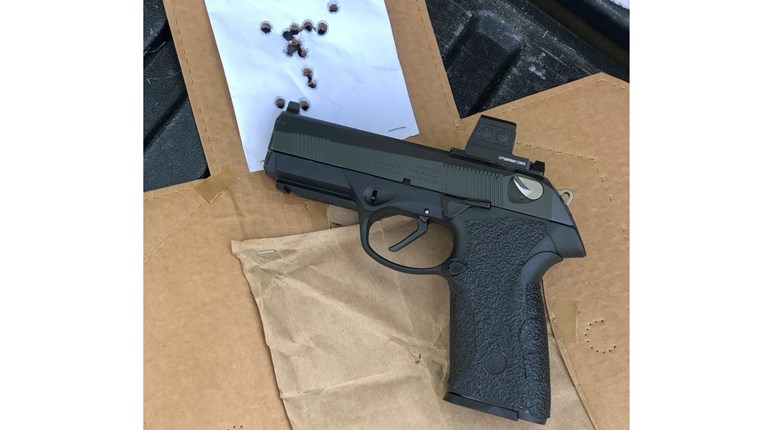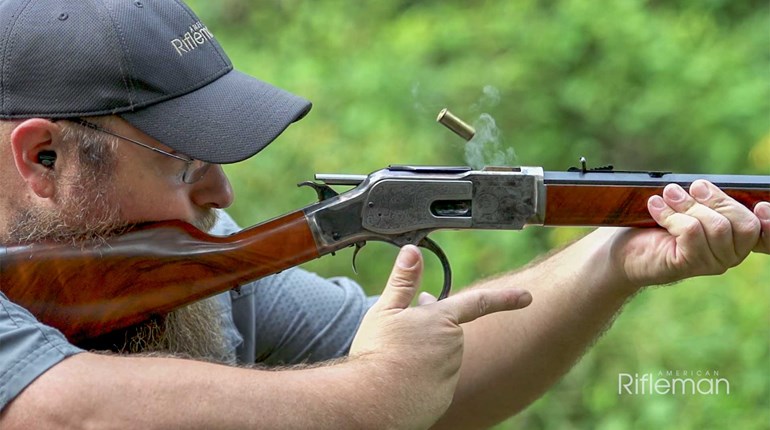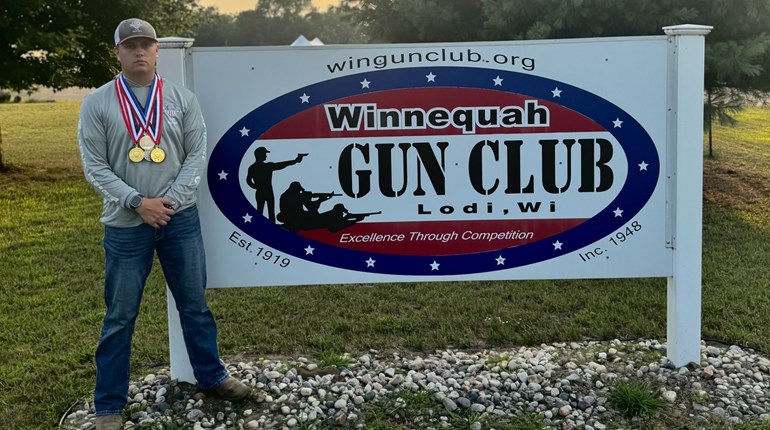** When you buy products through the links on our site, we may earn a commission that supports NRA's mission to protect, preserve and defend the Second Amendment. **
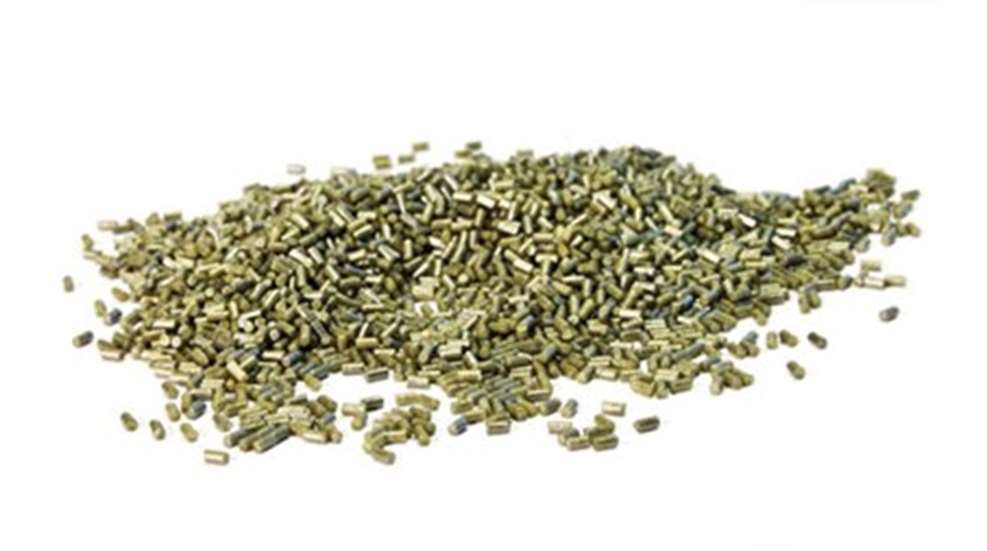
Gunpowder is a flammable solid that stores chemical energy. When ignited, it releases that stored chemical energy in the form of hot, rapidly expanding gas. In a firearm, propellants do not explode; rather, they deflagrate or burn rapidly. The rate of deflagration is what separates smokeless propellants from true explosives. An explosive may be defined as an energetic substance that deflagrates at velocities greater than 4,000 feet per second (f.p.s.). Smokeless propellants deflagrate at much slower velocities than that. There are three principal types of propellant powders:
1. Blackpowder
Blackpowder is a physical mix of three ingredients in the following proportions: charcoal (15 1/2 percent); sulphur (10 1/2 percent); and potassium nitrate (74 percent).
2. Semi-Smokeless
This type of propellant is a mixture of smokeless and blackpowder. It was used in early .22 rimfire ammunition, but has been obsolete since the late 1930s.
3. Smokeless Powder
This is a chemical mix of various ingredients that locks chemical energy into the molecular structure of the material. The main feed stock of smokeless powder is nitrocellulose obtained from either wood (good) or cotton (best).
There are three main types of smokeless powder:
1. Single-Base
The main ingredient in single-base smokeless powder is nitrocellulose. Examples include most IMR stick powders. Single-base propellants are a popular choice for many non-magnum rifle and handgun loads.
2. Double-Base
The nitrocellulose base is enhanced by the addition of 2 to 39 percent nitroglycerin. Examples include ball powders and Bullseye flake powder. Double-base propellants are a popular choice for many handgun and shotgun loads, as well as most rimfire ammunition.
3. Triple-Base
Nitroguanidine is added to double-base powder to increase the energy content even more. Examples include propellants for tank guns and artillery. This type of propellant is not often used in small-arms ammunition.
In addition to nitrocellulose and nitroglycerin, smokeless powder has several other ingredients, including: solvents, stabilizers, flash inhibitors, deterrent surface coatings, anti-static surface coatings and inert identity markers. Perhaps the most important of the above are the deterrent coatings that serve to help control the deflagration (or burning) rate along with the shape and size of the powder granules.
1. Blackpowder
Blackpowder is a physical mix of three ingredients in the following proportions: charcoal (15 1/2 percent); sulphur (10 1/2 percent); and potassium nitrate (74 percent).
2. Semi-Smokeless
This type of propellant is a mixture of smokeless and blackpowder. It was used in early .22 rimfire ammunition, but has been obsolete since the late 1930s.
3. Smokeless Powder
This is a chemical mix of various ingredients that locks chemical energy into the molecular structure of the material. The main feed stock of smokeless powder is nitrocellulose obtained from either wood (good) or cotton (best).
There are three main types of smokeless powder:
1. Single-Base
The main ingredient in single-base smokeless powder is nitrocellulose. Examples include most IMR stick powders. Single-base propellants are a popular choice for many non-magnum rifle and handgun loads.
2. Double-Base
The nitrocellulose base is enhanced by the addition of 2 to 39 percent nitroglycerin. Examples include ball powders and Bullseye flake powder. Double-base propellants are a popular choice for many handgun and shotgun loads, as well as most rimfire ammunition.
3. Triple-Base
Nitroguanidine is added to double-base powder to increase the energy content even more. Examples include propellants for tank guns and artillery. This type of propellant is not often used in small-arms ammunition.
In addition to nitrocellulose and nitroglycerin, smokeless powder has several other ingredients, including: solvents, stabilizers, flash inhibitors, deterrent surface coatings, anti-static surface coatings and inert identity markers. Perhaps the most important of the above are the deterrent coatings that serve to help control the deflagration (or burning) rate along with the shape and size of the powder granules.

